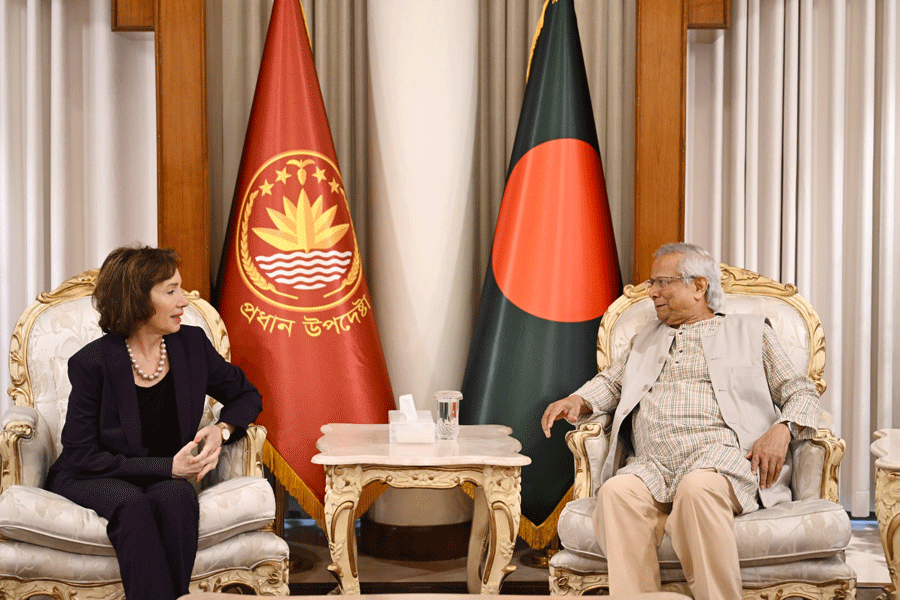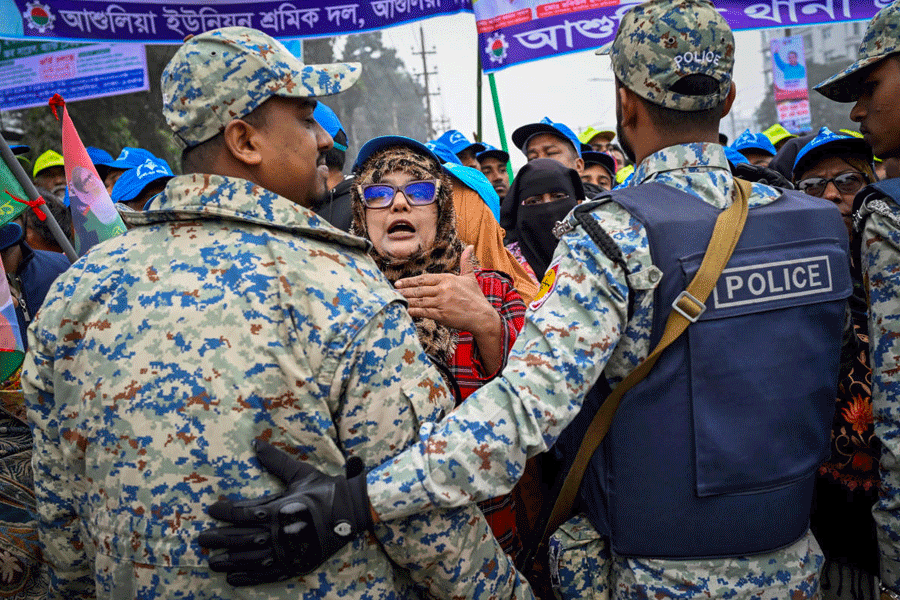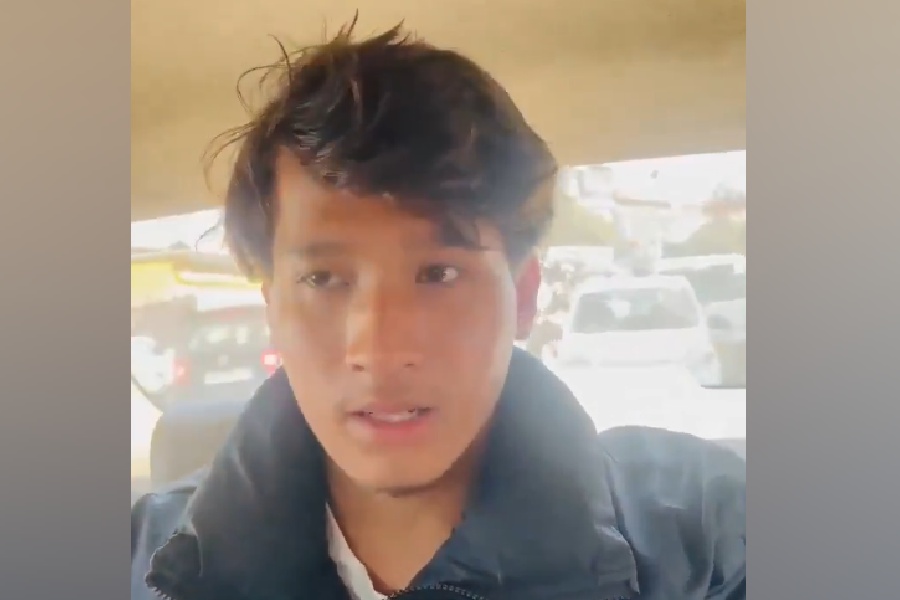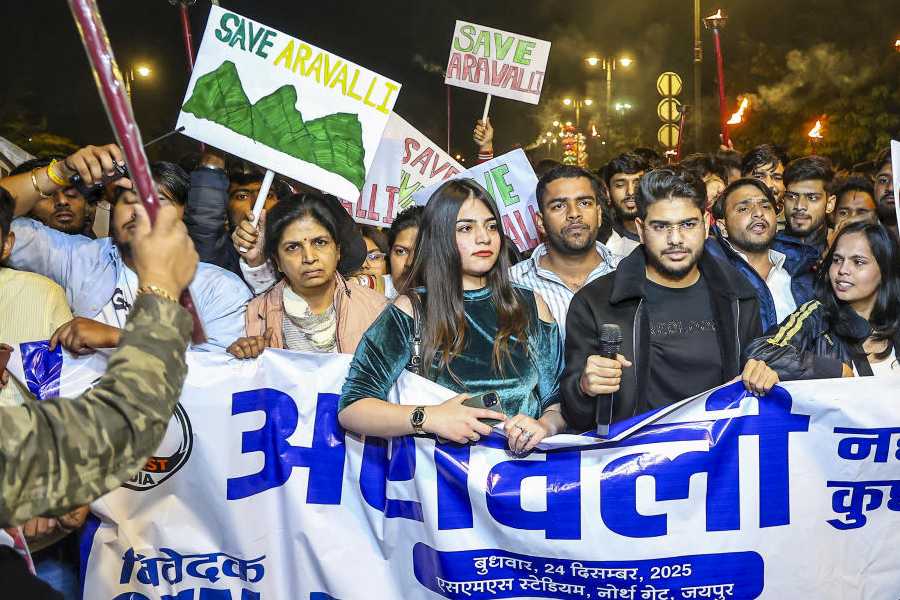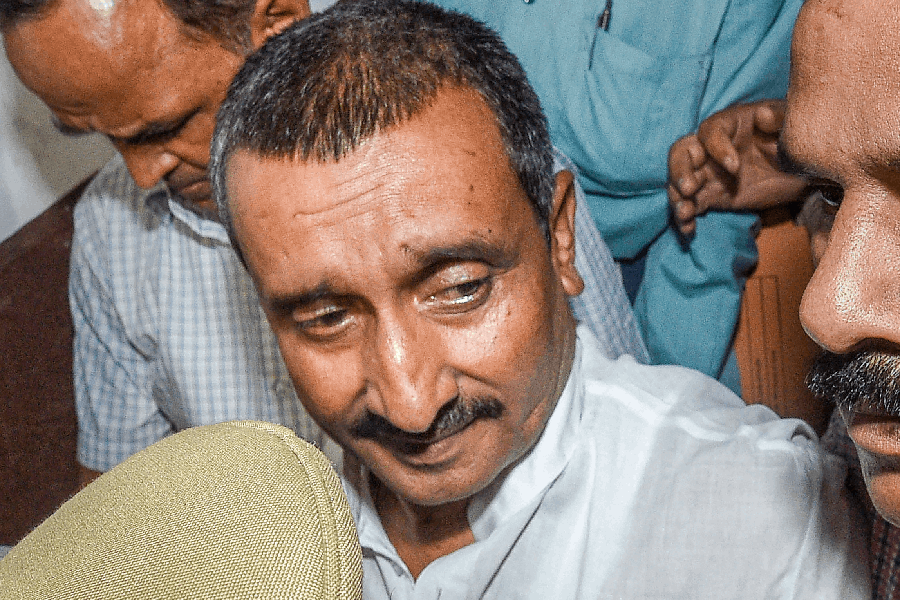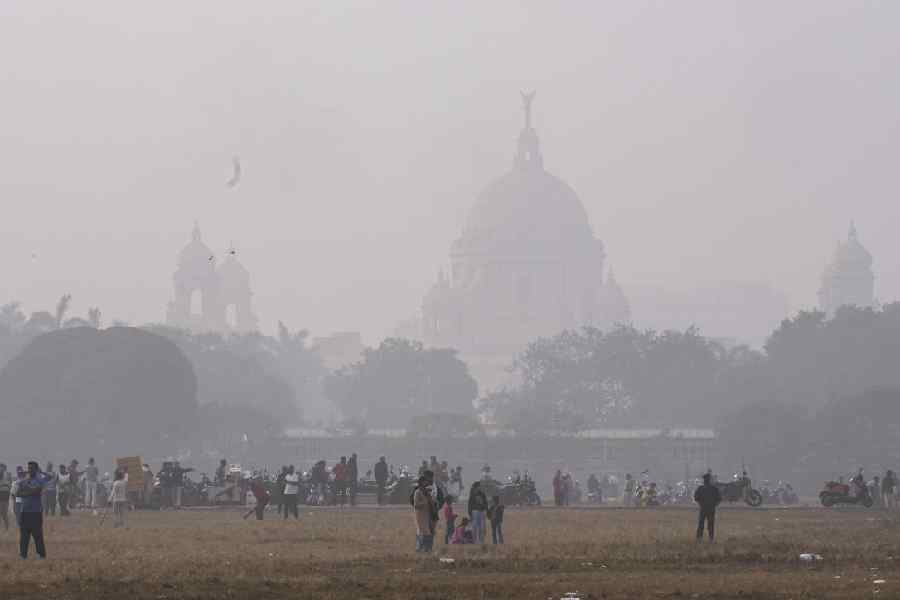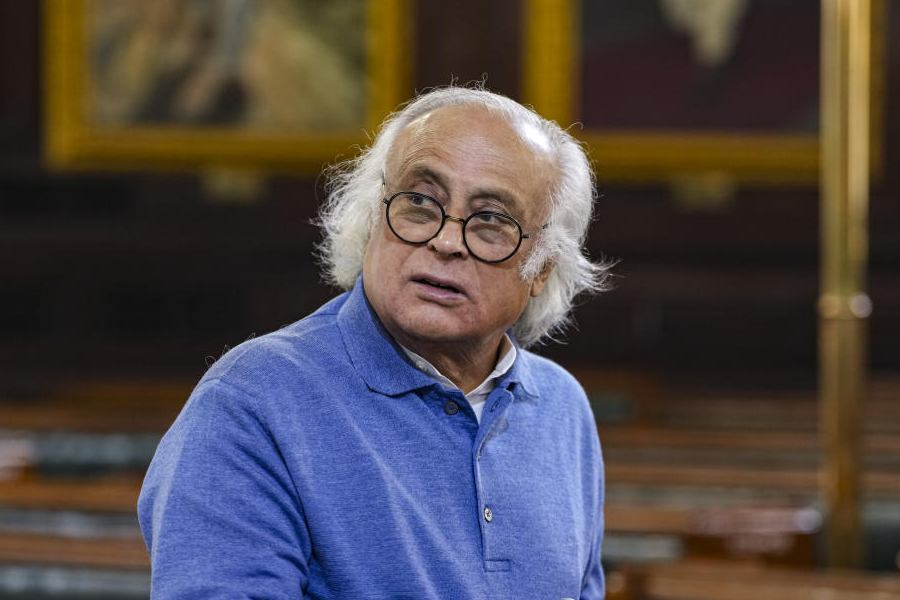 |
In the Rajasthan Desert near Barmer, Dec. 6: Dust, sand and diesel fumes shut out the afternoon sun as a column of tanks lurches over a sand berm called the Begundi Ridge and charges through the vastness of the desert near Barmer.
In the fog raised by the White Tiger Division, the formation of tanks in action here, the Indian Army is trying to chart a new way in which to go to battle.
Operation Sudarshan Shakti will probably be remembered more for the fine fit of the tank crewman’s black dungarees donned by President Pratibha Patil. But after the 40-minute charioteer’s panorama given to the President, it was a return to harsh days and nights in the desert for soldiers and officers.
After the nearly 60,000 troops go back from here to their barracks across the states of Madhya Pradesh, Maharashtra, Gujarat, Rajasthan and Andhra Pradesh in 10 days, army headquarters will be poring over the reports and analysis of the drills. Through them the army is aiming to reshape its organisation in a way it has not attempted since Operation Brasstacks in 1988.
“The ‘transformation study’ propounded by the army chief, Gen. V.K. Singh when he was the eastern army commander and me when I was the director-general (perspective planning) at headquarters is over. It is now time for implementation,” says Lt Gen. A.K. Singh, the southern army commander based in Pune. Lt Gen. A.K. Singh and the chief of the air force’s south-western air command, Air Marshal A.K. Gogoi, are overseeing the exercise.
The air force is conducting its own Exercise Mahagujraj alongside Sudarshan Shakti. The commanders do not spell out the exercise setting — or scenario — in which the largest of the army’s strike formations, the 21 Sudarshan Chakra Corps has been mobilised.
But a source says that the drills that began in the third week of September were in the final phase since December 1. They will likely culminate with a simulated “Air-Land Battle” that could airdrop a battalion (about 1,000) of special paratroopers some time next week. The army chief is also likely to revisit the exercise range for a third time.
Rarely has the army identified doctrinal changes with the persona of its commanders. Operation Brasstacks in 1988 clearly had the stamp of its then chief, the late Gen. K. Sundarji. There have been many exercises since then. More notably, the 15 drills since the 2001-2002 fullscale mobilisation called Operation Parakram, have claimed to infuse doctrinal changes. But none were identified with the names of their commanders in the way that the current Sudarshan Shakti is. The army is publicly identifying Gen. V.K. Singh and Lt Gen. A.K. Singh as the chief proponents of “transformation”.
But what exactly has “transformation” meant? India’s threat scenario on its western borders has not changed fundamentally in decades. Even after both India and Pakistan proclaimed they have nuclear weapons, they have been to war once (Kargil in 1999) and nearly went to war a second time (2001-2002) after the attack on the Indian Parliament.
“Our ‘mobilisation matrix’ has changed,” says one officer from the Southern Command. “We are seeing what it can mean,” he explained. In other words, India’s military establishment has shaken off the ennui that had set into procurement of new weapons and platforms till about the year 2000.
“We can move faster now and shoot more accurately,” says Lt Gen. Sanjeev Langer, the chief of the 21 Corps. The army has more tanks, armoured vehicles, radars, pilotless surveillance aircraft than it has ever had. Langer should know. He heads probably the most powerful corps of the army.
There are also more roads near border areas and an improvement in general infrastructure that the military can use. Some of that is evident on landing at Uttarlai, the Indian Air Force base outside Barmer, that is also being used in the current exercise. It is the first IAF base to have underground facilities. Not a single aircraft is visible on its surface.
Almost exactly forty years ago, Uttarlai was the base from which IAF Hunter aircraft flew out of to bomb advancing Pakistani armour that had been held off for a night by a company of Indian 23 Punjab troops in the “Battle of Longewala”. The battle was re-enacted in J.P Dutt’s hit film Border in which Sunny Deol and Jackie Shroff starred as the army colonel and the IAF squadron leader.
Today, Uttarlai is known to be a base of at least one squadron of fighter aircraft. A railway track with cars and rakes for the exclusive use for the military almost touches its runway. At its gates a graffiti reads “What you see inside here should not be spoken of beyond these walls.” At night, a solitary MiG 21 fighter screams down the runway and takes off, its tail aglow, it takes a sharp turn to the right, turns again, dives and takes off again in a sortie that probably rehearses a ground-attack.
Back at a nerve-centre of the exercise range — that stretches through the desert from Barmer to Jaisalmer — a dozen large video screens show images of paratroopers who have jumped in the darkness of a night, camouflaged tanks cutting through the sand and the thrush, static camps of military tents camouflaged by desert-coloured nets — all images beamed by Unmanned Aerial Vehicles flying at 18,000 feet.
Some of the images have been shot in the dark by Israeli-origin Searcher and Heron aircraft. All the intelligence is collated in the JOIR — Joint Operations and Information Room — manned by the army and the air force. This where senior commanders in the rear are beamed live pictures, pictures that let them see through the “fog of war” and make the battlefield “transparent”.
“This is a ‘testbed’ for our concepts,” says the southern army commander, Lt Gen. A.K. Singh. “We are seeing that launch of the concept of a ‘theatre offensive’ with the Sudarshan Chakra Corps in the lead.”
The “theatre concept” that army headquarters is trying out is intended to shake the chain of command out of its ennui. Over the years, largely because of a paucity of resources, commands were reluctant to part with their assets to favour units that were not directly under them.
Now, they are being asked to put all assets on the ground to assist the head of an assault force. This will demand a seamless flow, and probably a merger, of logistics branches — like the Army Service Corps — with the strike elements (like the strike corps) and also better co-ordination between commands. For example, in the western sector, the south-western command headquartered in Jaipur is intended to add more muscle alongside the Pune-headquartered Southern and the Chandimandir-headquartered Western Commands.
During the demonstration for Supreme Commander Pratibha Patil, the army and the air force compressed into 40 minutes and a patch of land barely four square-kilometres in area action that it sees unfolding over a week or more.
At the heart of the “transformation” into an “offensive theatre” is an integrated “Combat Battle Group” of tanks, mechanised forces, heavy artillery, attack helicopters and air defence units working in unison to overrun a supposedly enemy-held post defended by a company (about a 100 soldiers) that had mined the area around it.
In the plan, Indian Air Force fighter aircraft first photograph and then bombard the enemy positions to “soften” up defences. Assuming that the enemy has dug itself in and was fairly well defended, air elements also drop special forces behind enemy lines chiefly to extract intelligence on the adversary. These are beamed to the JOIR.
Spectacular action unfolds immediately afterwards, almost at the same time. The army’s recently acquired 80-km range Russian-origin Smerch multi-barrel rocket launchers, the older Grad and the DRDO-made Pinaka fire long-range surface-to-surface missiles. The Bofors 155mm and the 130mm open up with artillery at the same time from another flank. Then the tanks sweep over the ridge with Mi-35 helicopter gunships giving close air support. In the din and the dust, the infantry swarms in to hold the ground.
“Following the transformation stage, we are now in the ‘testbedding’ stage,” says Lt Gen. A.K. Singh. “A report and recommendations will follow”.


